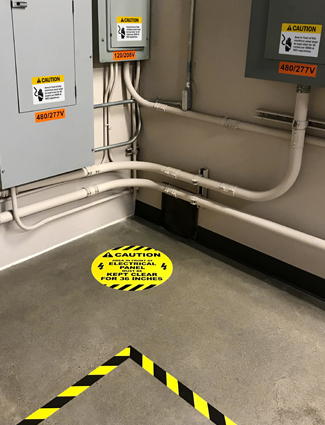4 Wayfinding Errors and How to Fix Them

If there were an emergency right now, would workers know where to exit? How about knowing where to find a first aid kit or locate an emergency shelter? Harm can ensue when wayfinding signage, floor markings, and other visual cues for important work safety information is missing. A professional wayfinding system should identify, provide directions or information, and be regulatory.
Increase Awareness
The Occupational Safety and Health Administration has rules for communicating egress routes in case of an emergency in OSHA 29 CFR 1910.37. These emergency preparedness rules are meant to support thorough facility safety plans. Last year, a woman in Denver, Colorado, was trapped in her work area during an emergency and could not flee the building. The emergency exit she tried to use was locked, an alternative route was unnoticeable, and a door was not visibly known as an emergency exit. OSHA cited the company for a variety of violations that included defective emergency egress. "Employers must take the steps necessary to eliminate hazards from the workplace," said Herb Gibson, an OSHA director in Colorado.
Wayfinding helps facilities organize the workflow and create barriers between workers and potential hazards. Here are four wayfinding errors and practical solutions to fix them:
Egress: Wrong exit sign information, or lack of, can be dangerous and can cost a person's life. The positioning of egress information is also important. Should a fire erupt in a building and smoke begins to fill the room, workers may not be able to see emergency signage that is at eye level. Use floor-level communication such as glow tape, floor marking signs, and directional arrows to amplify fire egress messages. This helps limit opening doors unnecessarily, which can fan flames and spread fire, according to fire experts.
Electrical: Common citations in fire analysis are from the lack of attention to electrical hazards. Electrical fire safety requirements are found in NFPA and NEC. Use signage to identify electrical equipment rooms. Workplaces can use a combination of floor marking and signs to communicate safe working and walking distances from electrical equipment and areas such as electrical panel rooms and industrial control panels.
Emergency equipment stations: A recent study by the American Heart Association shows that most workers do not know where emergency equipment is in their workplace. Besides making sure the workplace has items such as a first-aid station, fire extinguishers, and defibrillators, it is important to ensure they work properly. For easy identification, mark fire alarm and fire extinguisher stations. Post reminder signs with instructions on how to use fire abatement equipment. Don't forget to inspect and routinely clean emergency and eyewash stations.
Obstruction: Exits and routes that are not clear from obstruction can cause more problems and increase stress, especially during an emergency. Evaluate areas where workers work and where they commonly exit to ensure there is a clear pathway. This also limits the potential for slips, trips, and falls.
Stay on the Path to Safety
Limiting wayfinding errors is just one way to strengthen safety in any workplace. Start with a facility safety audit. In a stressful situation and in a hurry to leave a building, workers need correct and efficient visual cues that they can trust for safety. Facility managers and other support staff can evaluate the emergency needs of the workplace using visual resources such as an emergency preparedness chart. Install highly visible floor marking to highlight emergency exit and working/walking paths, along with extra emergency lighting. Convey safety messages for wayfinding necessities when and where workers need it most.
Related Resources

Plan Ahead: Enhance Emergency Safety
Accidents will happen, and so can emergencies. As equipment and processes change, it's important to keep ...
Read
Floor Marking That Improves Fire Safety and Compliance
How Can Facilities Make Critical Areas Easier to Find in an Emergency? Can personnel and visitors easily ...
Read
Keep Exits Clear and Avoid Obstruction Violations
While it seems common sense to not block emergency exits, it happens; even if clutter seems only temporary. ...
Read.png)






